12 Best Kyoto Foods To Try in 2025

From high-end multi-course meals to humble home-style snacks, Kyoto food is a reflection of the city itself: deeply rooted in tradition, yet constantly evolving with the seasons. But what makes Kyoto food so distinct from other regional Japanese cuisines?
Having been Japan’s imperial capital for over 1,000 years, Kyoto developed a rich culinary tradition shaped by history, local ingredients and refined techniques. According to sources like the Auguste Escoffier School of Culinary Arts, the need to feed the emperor and royal attendants played a large part in shaping Kyoto's thriving food culture.
These days, Kyoto food still prioritizes seasonality, delicate flavors and elegant presentation, featuring regional specialties like Kyo-yasai (Kyoto vegetables), handmade tofu and lightly fermented tsukemono (pickles). Its inland location also influences its food culture, with a greater emphasis on vegetables, tofu and preserved seafood rather than fresh fish.
To discover more about the fascinating and flavorful cuisine, read on for 12 of the can't-miss Kyoto foods and their interesting backgrounds.
Jump to Section
What Food Is Kyoto Known For?
Kyoto is most known for kaiseki ryori, a meticulously crafted multi-course meal that highlights the charm and seasonality of Kyoto food. Alongside kaiseki ryori, home-style cuisine — called obanzai ryori — is all about the city's emphasis on resourcefulness and simplicity, with a focus on the best locally grown ingredients. You’ll also find shojin ryori, the plant-based cuisine of Buddhist monks, playing a significant role in Kyoto’s food culture.
To bring Kyoto food into your own kitchen, you’ll need a few essential ingredients that reflect the region's culinary style. High-quality tofu and yuba (tofu skin) are fundamental, along with dashi for broths, which often features kelp (kombu) and bonito flakes.
It’s quite easy to make your own tsukemono (Japanese pickles) at home as well. This classic Kyoto food accompaniment adds a distinctive touch to your meals. Finally, if you enjoy drinking tea, you'll be pleased to learn that matcha is a must-have ingredient in Kyoto, featuring in both culinary and beverage applications.
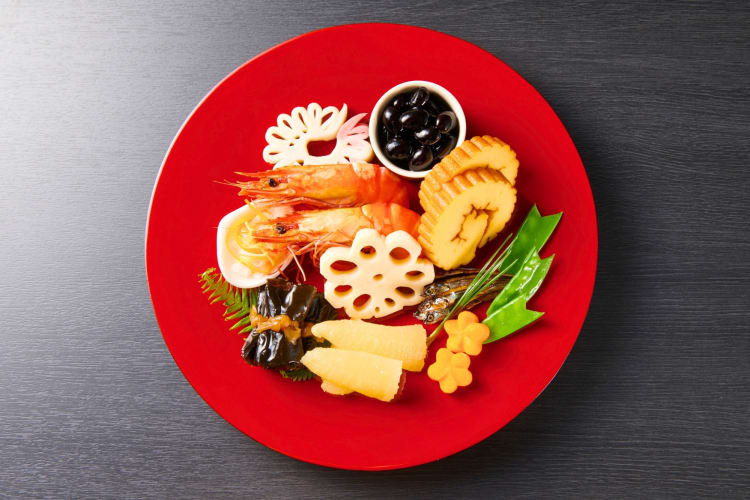
The 12 Most Popular Foods in Kyoto, Japan
1. Kaiseki Ryori
If you’re looking for the best food in Kyoto, kaiseki ryori is the pinnacle of fine dining. Originally a part of the traditional tea ceremony, kaiseki has evolved into a multi-course meal that showcases the diversity of the seasonal ingredients in Kyoto food.
Each dish in a kaiseki meal is carefully prepared to highlight the natural flavors of the ingredients, following a precise order dictated by their cooking method. A typical kaiseki meal will start with light appetizers, followed by simmered dishes and grilled courses. It concludes with a delicate sweet treat.
Presentation is considered just as important as taste, with chefs meticulously arranging each plate to mirror Kyoto’s changing seasons. Kyoto food lovers can experience kaiseki in high-end restaurants and traditional ryokan inns, where master chefs craft meals with an unparalleled level of detail.

2. Shojin Ryori
Shojin ryori, the vegetarian cuisine of Buddhist monks, offers a glimpse into Kyoto’s spiritual traditions. This popular food in Kyoto, Japan relies on tofu, vegetables and other plant-based ingredients to produce dishes that are both nourishing and full of umami.
One of the most famous examples is yudofu, a dish of soft tofu that’s gently simmered with vegetables in a light broth. Unlike the elaborate courses of kaiseki, shojin ryori focuses more on simplicity, emphasizing mindfulness and gratitude for nature’s bounty.
This facet of Kyoto food is all about balance and harmony in every meal and visitors eager to try shojin ryori can find it at temple lodgings, where the serene setting enhances the dining experience.

3. Obanzai Ryori
Obanzai ryori represents Kyoto’s home-style cooking, a contrast to the refinement of kaiseki or the spirituality of shojin ryori. This subgenre of Kyoto Japanese cuisine is characterized by small, unpretentious dishes made with local, seasonal ingredients, of which at least half should be from Kyoto.
The flavors are gentle and familiar and often feature slow-simmered vegetables, filling proteins and light seasonings. Popular obanzai dishes include agedashi tofu, a crisp, golden-fried tofu served in a savory dashi broth, nimono (simmered vegetables) and dashimaki tamago, an expertly rolled omelette infused with dashi for a subtly sweet and savory bite.

4. Yudofu
Yudofu is a dish that embodies the understated beauty of Kyoto food. At first glance, it may seem simple — silken tofu gently warmed in a light broth — but this careful preparation enhances the tofu’s natural sweetness and creamy texture.
Typically served with a dashi broth, yudofu can also be accompanied by condiments like wasabi, green onions and shichimi togarashi, a fragrant chile blend that adds a touch of heat. For some of the best food in Kyoto during the winter months, look to yudofu, as it is warming and not too filling.
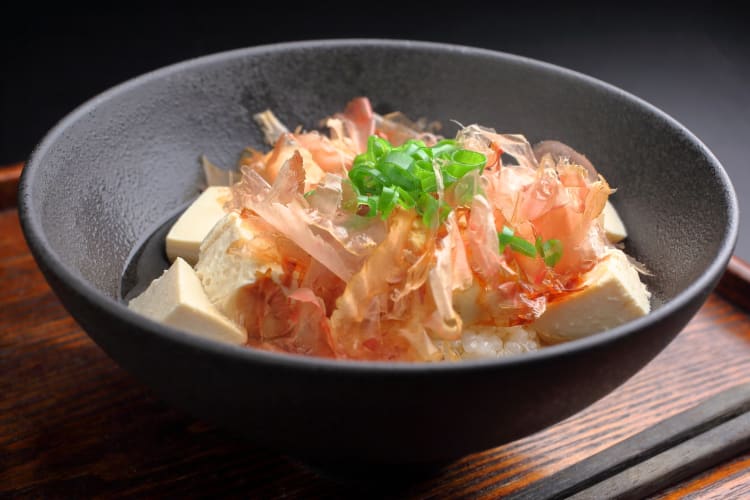
5. Yuba
Yuba (or tofu skin) is another standout dish in Kyoto cuisine, celebrated for its delicate flavor and silky texture. Formed during the tofu-making process when soy milk is heated and a thin skin forms on the surface, yuba is a highly versatile ingredient.
It can be served fresh as sashimi — where its creamy consistency is appreciated in its purest form — or used in soups, rice dishes and even as a wrapper for sushi. As an integral part of Kyoto food culture, yuba is valued for its refined yet simple taste and it mirrors the ethos of Kyoto food in minimizing waste by utilizing every part of the tofu-making process.

6. Hamo (Pike Conger Eel)
Hamo or pike conger eel, is a must-try dish in Kyoto and it’s a delicacy that’s best enjoyed in summer. Beloved for its firm yet delicate texture, hamo requires a specialized technique called honekiri, in which a skilled chef makes fine cuts along the eel’s length to break apart its numerous tiny bones.
This technique not only makes the eel easier to eat but also enhances its soft, flaky texture. Hamo is an essential part of the Kyoto food scene in the warmer months, particularly during the famous Gion Festival held at the Yasaka Shrine located in Kyoto's Gion district.
You can find this traditional dish served boiled with a light plum sauce to accentuate its natural sweetness or deep-fried as tempura for a crispy contrast. However you choose to enjoy it, hamo remains one of the most iconic offerings in Kyoto food culture.
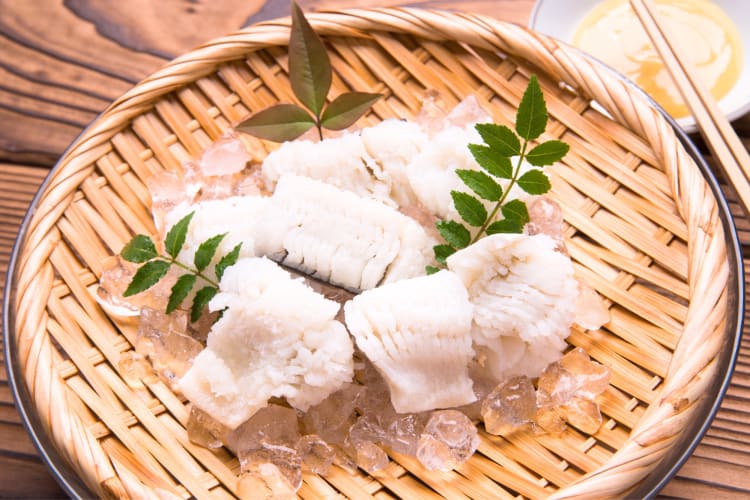
7. Goma Dofu
Goma dofu is a Kyoto food delicacy that contrasts traditional soy-based tofu. Despite its name, it is not made from soybeans — instead, it’s made from ground sesame seeds that are blended with water and kuzu starch before being slowly heated and stirred until they reach a smooth, custard-like consistency.
The result is a silky, slightly bouncy texture with a rich, nutty sesame flavor that melts in the mouth. Goma dofu is often served chilled, drizzled with a hint of soy sauce or topped with wasabi.
It’s a must-try cuisine in Kyoto and it's a key component of shojin ryori, though you may also find it in some kaiseki restaurants. Enjoy this dish as an elegant appetizer or as a delicate pairing with sake.

8. Sabazushi
Sabazushi stands apart from more widely recognized sushi varieties and it’s a great addition to your foodie bucket list. This pressed sushi features seasoned rice topped with mackerel that has been cured in salt and rice vinegar.
This curing technique enhances the fish’s deep umami flavor while preserving its freshness. This dish is instantly recognizable by the beautiful mackerel skin on display. The curing process also firms the fish’s texture, making it a perfect match for the subtly flavored rice.
Some variations include a thin strip of kombu seaweed layered on top, adding an extra layer of umami. Unlike nigiri, sabazushi is more robust and is often sold as a convenient and satisfying meal at Kyoto’s markets and specialty sushi shops.
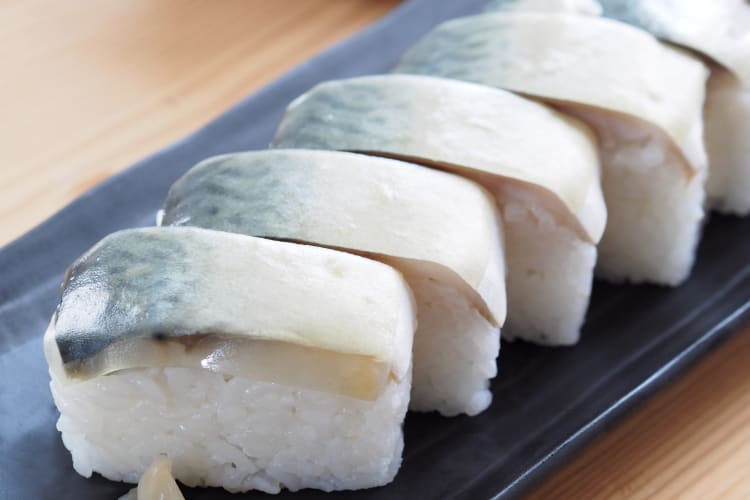
9. Tsukemono
Tsukemono or Japanese pickles are an essential component of Kyoto food. Served as a side dish to a wide variety of main dishes, tsukemono complements any meal with bright, tangy flavors and crunchy textures.
These pickles are traditionally made using locally grown vegetables like daikon radish, cucumbers, eggplant and turnips, which are preserved in salt, miso, vinegar or rice bran to develop their characteristic flavors.
Kyoto is particularly famous for its shibazuke, a vibrant purple pickle made from cucumbers and eggplant fermented with red shiso leaves, as well as senmaizuke, thinly sliced turnips pickled with sweet vinegar and kombu.
Often served alongside rice or as a palate cleanser in kaiseki and obanzai meals, tsukemono can cut through richer dishes and uplift the flavors. While many people choose to make their own tsukemono from scratch, many variations are also sold in local konbini.

10. Matcha
Matcha is deeply woven into Kyoto food culture and is instantly recognizable by its vibrant green hue. With a complex earthy and umami taste, matcha is a beloved ingredient in everything from traditional tea ceremonies to modern sweets.
This finely milled green tea powder is known for its slightly bitter yet deeply satisfying flavor, which pairs beautifully with sweet accompaniments. You can sample fantastic matcha in many of the best foodie cities across Japan, including Kyoto.
Matcha is best experienced in Kyoto’s historic tea houses, where it is gently whisked into a warming and frothy beverage. If it’s too hot for tea, you can also try matcha in a variety of contemporary Kyoto foods like matcha-flavored ice cream, cakes and wagashi, traditional Japanese confections.
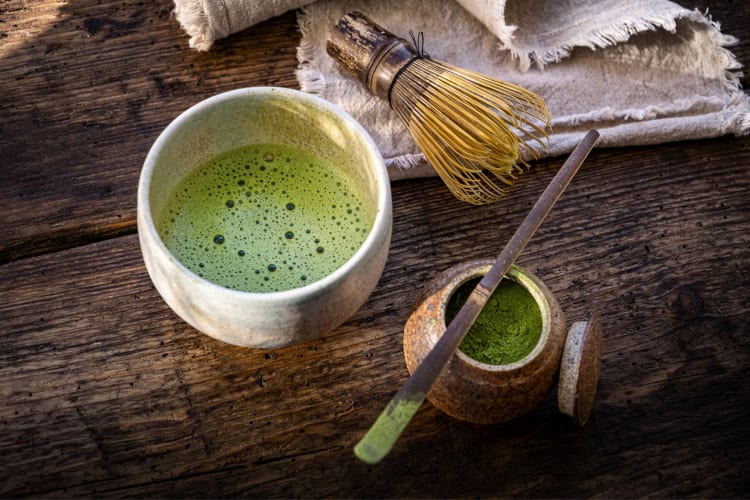
11. Yatsuhashi
Yatsuhashi is a classic Kyoto food that all ages love. This sweet treat is made from rice flour, sugar and cinnamon, giving it a subtly sweet and slightly chewy consistency when baked into its signature curved shape.
However, the unbaked version, known as nama yatsuhashi, is equally popular, featuring a soft, mochi-like exterior that encases fillings like sweet red bean paste, chocolate or even matcha-flavored cream. You can usually find nama yatsuhashi at Japanese street food markets, and the baked version is often available at souvenir shops and confectionery stores.

12. Dashimaki Tamago
Dashimaki tamago is Kyoto’s take on the classic Japanese rolled omelette, distinguishable by its delicate layers and rich flavor. Unlike the slightly sweet tamagoyaki found in other regions, Kyoto’s version is infused with dashi, giving it an extra depth of umami. The omelette is skillfully made by rolling thin layers of egg in a rectangular pan, creating a fluffy yet moist texture that practically melts in the mouth.
Often enjoyed for breakfast, as a side dish or in a bento box, dashimaki tamago is an example of how delicious versions of staple Japanese dishes feature in Kyoto’s food traditions. If you want to try this Kyoto food, it’s a favorite in restaurants and obanzai eateries, where its light, savory flavor perfectly complements a balanced meal.

Learn To Cook Kyoto Foods
Bringing Kyoto food into your own kitchen is a great way to broaden your understanding of Japanese food and learn more about the city’s culinary traditions. Whether you want to master the delicate techniques of kaiseki ryori, prepare comforting obanzai dishes or craft perfectly balanced bowls of miso soup, cooking classes in Kyoto offer hands-on instruction from skilled chefs in the place where the traditions were born.
If you can’t travel, online cooking classes offer a convenient way to learn how to make delicious Japanese dishes, including Kyoto specialties. There may also be cooking classes near you that focus on Japanese cuisine, helping you develop the knife skills, simmering techniques and plating artistry that define Kyoto food.
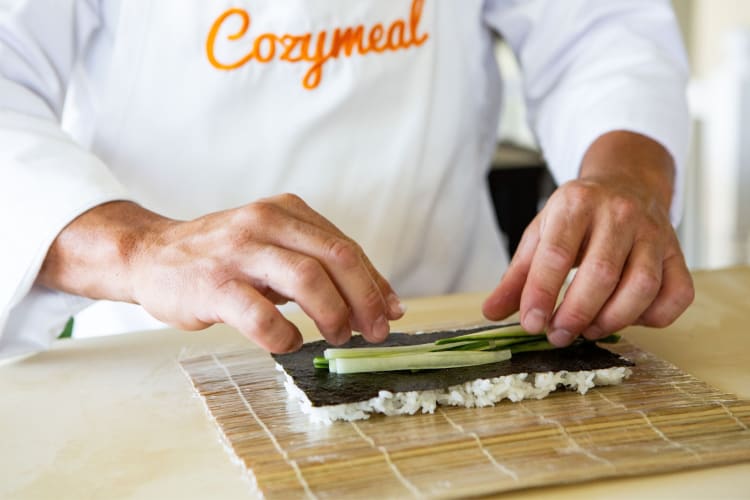
Once you try Kyoto food for the first time, there’s no doubt you won’t ever be able to stop thinking about it. From the grass-green matcha soft serve to the moreish sabazushi, Kyoto food offers a journey for your taste buds unlike any other. Every dish tells a story of tradition and seasonality, making Kyoto a dream destination for food lovers.
For even more ways to explore your favorite foods, check out other experiences happening on Cozymeal.



FOOD FOR THOUGHT?
Join the conversation.